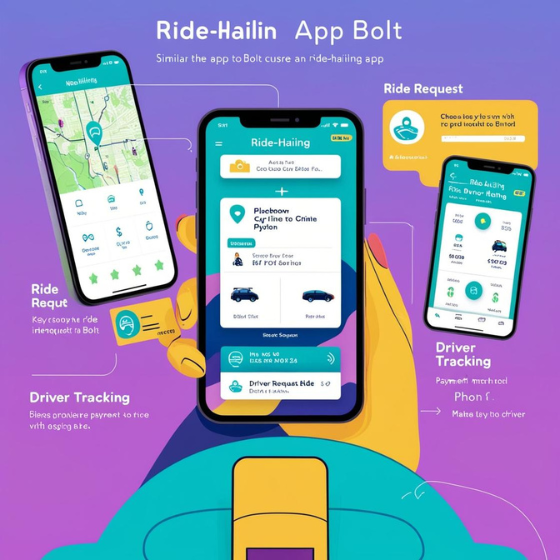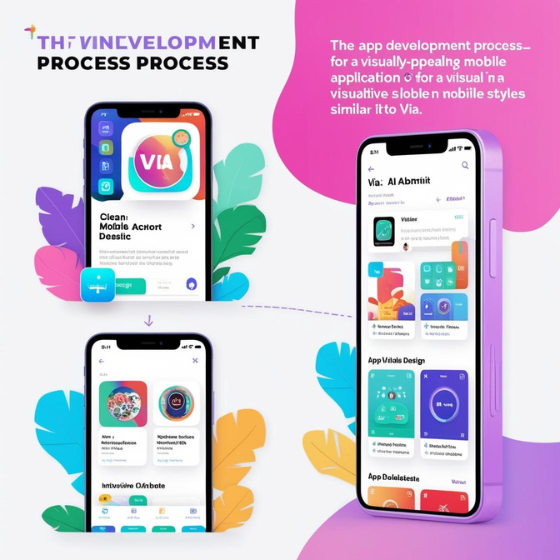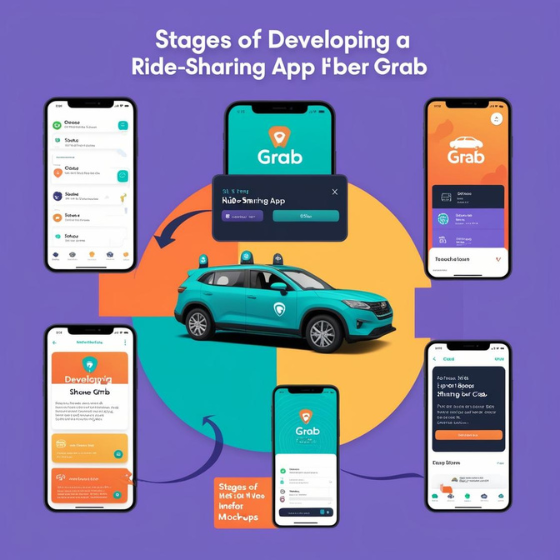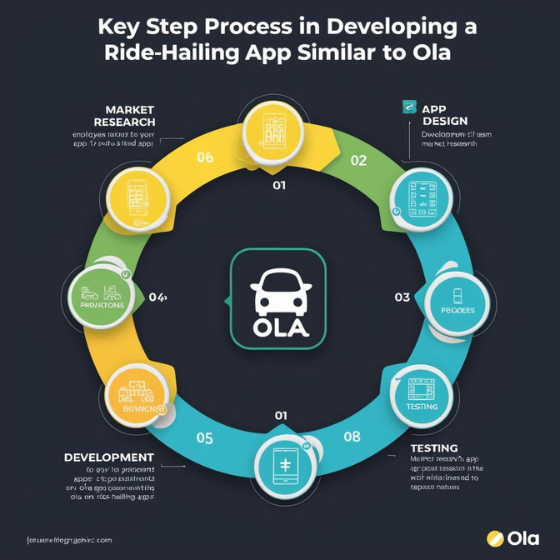How to Make an App Like Bolt
Creating an app like Bolt, a leading mobility platform, involves a combination of technical expertise, strategic planning, and customer-centric design. With the rise of on-demand services, understanding how to make an app like Bolt can position your business for success in the competitive app market. This guide will walk you through the steps to design, develop, and launch a successful app that rivals industry leaders while showcasing Sodio’s expertise in app development.
Understanding the Appeal of Bolt
Bolt’s success lies in its ability to seamlessly connect users with drivers while offering competitive pricing, user-friendly interfaces, and reliable services. If you aim to replicate this success, consider the following features and functionalities:
- Real-time GPS tracking: Essential for location-based services.
- Secure payment gateways: Offering multiple payment options.
- User and driver profiles: Enabling trust and personalization.
- Ratings and reviews: Building accountability and improving service quality.
- Multi-service integration: Catering to various user needs like ride-hailing, food delivery, and scooter rentals.
Step 1: Define Your App’s Purpose and Target Audience
Before diving into development, clarify your app’s purpose. Are you focusing on ride-hailing, delivery services, or a combination of both? Identifying your target audience will shape your app’s features and design. For example:
- Urban commuters: Require efficiency and affordability.
- Families: Need safety and convenience.
- Businesses: Look for reliability and scalability.
Understanding these demographics is crucial when planning how to make an app like Bolt. Sodio’s consulting services can help refine these aspects to align with market demands.
Step 2: Research the Market and Competitors
Conduct a comprehensive market analysis to identify:
- Key competitors: Bolt, Uber, Lyft, etc.
- Market gaps: Unmet needs or underserved locations.
- Trends: Growing demand for electric vehicles and eco-friendly options.
Use these insights to differentiate your app. For instance, incorporating features like eco-friendly ride options or subscription-based pricing could give you a competitive edge.
Step 3: Prioritize Features and Create a Roadmap
Building an app like Bolt requires a feature roadmap. Start with an MVP (Minimum Viable Product) to test core functionalities such as:
- User registration and login: Simplified through social media or email.
- Ride booking system: With options for scheduled or immediate rides.
- Driver matching algorithm: To ensure quick and reliable matches.
Enhance your MVP over time with advanced features like AI-based route optimization, multilingual support, or loyalty programs. Sodio specializes in creating scalable solutions, ensuring your app grows with your business.
Step 4: Partner with the Right Development Team
Choosing the right development partner is critical when considering how to make an app like Bolt. Sodio’s team of experts can handle:
- Custom app design: Tailored to your brand identity.
- Backend development: Ensuring reliability and performance.
- Frontend development: Prioritizing user experience and responsiveness.
Collaborating with a trusted partner like Sodio ensures a seamless development process and a product that meets industry standards.
Step 5: Design an Intuitive User Interface (UI)
A user-friendly UI is crucial for app adoption and retention. Key design principles include:
- Minimalistic layouts: Reducing clutter for ease of navigation.
- Consistent branding: Reinforcing brand recognition.
- Accessibility features: Catering to users with disabilities.
By integrating user-centric design elements, you can create an app that appeals to a wide audience. Sodio’s design services emphasize intuitive interfaces that enhance user satisfaction.
Step 6: Leverage Advanced Technologies
Integrating advanced technologies can set your app apart. Consider:
- Artificial Intelligence (AI): For personalized recommendations and dynamic pricing.
- Machine Learning (ML): To improve driver matching and optimize routes.
- Internet of Things (IoT): For fleet management and maintenance alerts.
Sodio’s expertise in these technologies ensures your app remains competitive and future-proof.
Step 7: Develop a Marketing and Launch Strategy
An effective marketing strategy is essential for a successful app launch. Steps include:
- Pre-launch campaigns: Building anticipation through social media and email marketing.
- Influencer partnerships: Leveraging influencers to reach target demographics.
- Referral programs: Encouraging users to invite friends in exchange for rewards.
Sodio’s marketing team can craft a tailored strategy to maximize your app’s visibility and downloads.
Step 8: Focus on Continuous Improvement
Once your app is live, gather user feedback to identify areas for improvement. Regular updates based on user input will:
- Enhance functionality.
- Fix bugs and security vulnerabilities.
- Introduce new features to keep users engaged.
With Sodio’s maintenance services, you can ensure your app remains reliable and up-to-date.
Why Choose Sodio for Your App Development Needs?
Sodio is a trusted partner in app development, offering:
- End-to-end solutions: From ideation to deployment.
- Industry expertise: Proven success in creating apps across various sectors.
- Scalable technologies: Ensuring long-term growth and adaptability.
If you’re wondering how to make an app like Bolt, partnering with Sodio guarantees a product that meets user expectations and market demands. Learn more about our mobile app development services.
Conclusion
Creating an app like Bolt is a complex yet rewarding process. By focusing on user needs, leveraging advanced technologies, and partnering with experts like Sodio, you can launch an app that stands out in the competitive mobility market. Whether you’re at the initial planning stage or ready to develop, Sodio is here to guide you every step of the way.
Take the first step today by contacting our team for a consultation. Let us help you turn your vision into reality and make your mark in the app development world.







